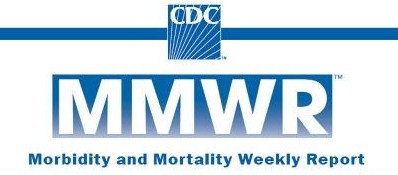
READ MMWR Report: Smoking Restrictions in Large-Hub Airports --- United States, 2002 and 2010, November 19, 2010 / 59(45);1484-1487..
November 18, 2010 - Overenthusiastic Transportation Security Administration (TSA) pat-downs aren't your only travel worry this holiday season, according to the Centers for Disease Control (CDC) and Prevention. A new report by the agency finds that one in four of the largest U.S. airports still allows smoking indoors, potentially exposing travelers and workers to disease-causing secondhand smoke.
The findings, published today, November 18th in the CDC's Morbidity and Mortality Weekly Report (see above), reveal an unnecessary risk, according to CDC director Thomas Friedan. Secondhand smoke has been linked to heart attacks, lung cancer and asthma attacks, among other ailments.
"Every year, millions of people who travel through and work at these airports are unnecessarily exposed to secondhand smoke," Friedan said in a statement. "Even ventilated smoking rooms do not eliminate secondhand smoke exposure. Eliminating smoking at airports is the only way to fully eliminate exposure."
 But seven of the nation's largest airports still allow indoor smoking in designated areas, the CDC reports. That includes Hartsfield-Jackson Atlanta International Airport, Dallas Fort Worth International Airport, and Denver International Airport, three of the five busiest airports in the country. The other four large airports that allow indoor smoking are: Las Vegas McCarran International Airport, Charlotte Douglas International Airport, Washington Dulles International Airport, and Salt Lake City International Airport.
But seven of the nation's largest airports still allow indoor smoking in designated areas, the CDC reports. That includes Hartsfield-Jackson Atlanta International Airport, Dallas Fort Worth International Airport, and Denver International Airport, three of the five busiest airports in the country. The other four large airports that allow indoor smoking are: Las Vegas McCarran International Airport, Charlotte Douglas International Airport, Washington Dulles International Airport, and Salt Lake City International Airport."Completely eliminating smoking in all public places and workplaces, including airports, is the only way to fully protect nonsmokers from secondhand smoke exposure," Ursula Bauer, the director of the CDC's National Center for Chronic Disease Prevention and Health Promotion, said in a statement. "Secondhand smoke is responsible for 46,000 heart disease deaths and 3,400 lung cancer deaths each year."
CDC- Secondhand Smoke..
Reference: CDC: Air Travelers at Risk From Secondhand Smoke by Stephanie Pappas, LiveScience Senior Writer, Live Science, 11/18/2010.
(passive smoking, involuntary smoking, shs, environnmental tobacco smoke, ets, sidestream smoke)


0 comments:
Post a Comment